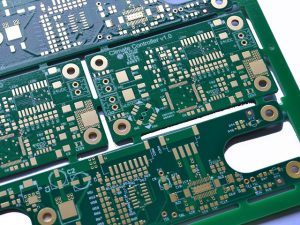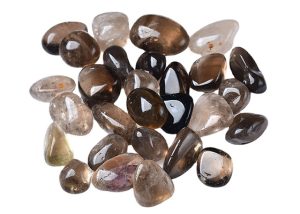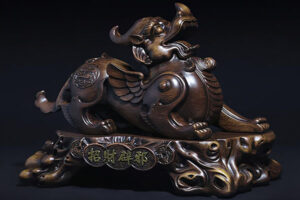
As a lover of gemstones, you may have come across Smoky Quartz and Obsidian at some point. These two stones are known for their unique characteristics and properties, making them popular choices for both decorative and spiritual purposes. However, despite sharing some similarities, they are quite distinct in terms of their physical attributes, energetic qualities, and healing properties. In this post, we will explore the differences and similarities between Smoky Quartz and Obsidian to help you choose the right stone for your needs.
What is Smoky Quartz?
Smoky Quartz is a type of quartz crystal that ranges in color from light gray to dark brown, with a smoky, translucent appearance. It is formed through a natural process of ionizing radiation and aluminum impurities, which give the stone its distinctive color and energy. Smoky Quartz is commonly found in Brazil, the United States, and Scotland, among other places.
Properties and Uses of Smoky Quartz
Smoky Quartz is known for its grounding and protective properties, making it an excellent stone for meditation, stress relief, and emotional healing. It is said to absorb negative energy and promote a sense of calm and balance, making it ideal for people who suffer from anxiety, depression, or PTSD. Additionally, Smoky Quartz is said to enhance concentration, creativity, and productivity, making it a popular choice for students, writers, and artists.
In terms of physical healing, Smoky Quartz is said to be beneficial for the digestive system, kidneys, and reproductive organs. It is also said to alleviate headaches, back pain, and muscle tension. Smoky Quartz is commonly used in jewelry, home decor, and crystal grids to enhance its healing properties.
What is Obsidian?
Obsidian is a naturally occurring volcanic glass that is formed when lava cools rapidly, creating a smooth, shiny surface. It can range in color from black to brown, green, and even purple, depending on the minerals present in the lava. Obsidian is commonly found in Mexico, the United States, and Italy, among other places.
Properties and Uses of Obsidian
Obsidian is known for its protective and transformative properties, making it an excellent stone for spiritual growth, self-awareness, and emotional healing. It is said to absorb negative energy and promote a sense of clarity and truthfulness, making it ideal for people who struggle with self-doubt or negative self-talk. Additionally, Obsidian is said to enhance intuition, creativity, and communication, making it a popular choice for healers, psychics, and spiritual practitioners.
In terms of physical healing, Obsidian is said to be beneficial for the digestive system, skin, and immune system. It is also said to alleviate pain, inflammation, and anxiety. Obsidian is commonly used in jewelry, ritual tools, and home decor to enhance its energetic properties.
Differences Between Smoky Quartz and Obsidian
While both Smoky Quartz and Obsidian have grounding and protective properties, they are quite different in terms of their appearance, chemical composition, and energetic qualities. Here are some of the main differences between the two stones:
Physical Characteristics
Smoky Quartz is a type of quartz crystal, which means it has a hexagonal shape and a hardness of 7 on the Mohs scale. It is translucent and has a smoky brown color, which can vary in intensity depending on the amount of radiation and aluminum present in the crystal. Smoky Quartz is often used in jewelry, home decor, and crystal grids.
Obsidian, on the other hand, is a type of volcanic glass that is amorphous, meaning it has no crystal structure. It is usually black or dark brown in color, with a smooth, glassy texture. Obsidian is often used in ritual tools, such as scrying mirrors and knives, as well as in jewelry and home decor.
Chemical Composition
Smoky Quartz is composed of silicon dioxide (SiO2) with traces of aluminum, which give it its smoky color. It has a trigonal crystal structure and is a member of the quartz family, which includes other crystals such as clear quartz, amethyst, and rose quartz.
Obsidian, on the other hand, is composed of volcanic glass, which is formed from rapidly cooled lava. It is rich in silica (SiO2) and has no crystal structure. It is classified as a mineraloid, which means it has mineral-like properties but does not meet the criteria to be considered a mineral.
Colors and Patterns
Smoky Quartz is known for its smoky brown color, which ranges from light gray to dark brown. It can also have streaks of black or white, depending on the impurities present in the crystal. Some varieties of Smoky Quartz, such as Morion and Cairngorm, are darker in color and have a more intense energy.
Obsidian comes in a variety of colors and patterns, depending on the minerals present in the lava. Black Obsidian is the most common type and is formed from lava rich in iron and magnesium. Other types of Obsidian include Mahogany Obsidian, which has a reddish-brown color, and Rainbow Obsidian, which has a sheen of purple, green, or gold.
Properties and Energies
Smoky Quartz is known for its grounding and protective energies, which help to absorb negative energy and promote a sense of calm and balance. It is also said to enhance concentration, creativity, and productivity. Smoky Quartz is associated with the root chakra, which is the energy center that governs our sense of safety, security, and groundedness.
Obsidian, on the other hand, is known for its transformative and protective energies, which help to absorb negative energy and promote a sense of clarity and truthfulness. It is also said to enhance intuition, creativity, and communication. Obsidian is associated with the root, sacral, and third eye chakras, which are the energy centers that govern our sense of grounding, creativity, and intuition.
Uses and Applications
Smoky Quartz is commonly used in meditation, stress relief, and emotional healing. It is also used to enhance concentration, creativity, and productivity. Smoky Quartz can be used in jewelry, home decor, and crystal grids to enhance its energetic properties.
Obsidian is commonly used in spiritual practices, such as meditation, divination, and energy healing. It is also used to enhance intuition, creativity, and communication. Obsidian can be used in jewelry, ritual tools, and home decor to enhance its transformative properties.
Similarities Between Smoky Quartz and Obsidian
Despite their differences, Smoky Quartz and Obsidian share some similarities in terms of their origin, durability, and healing properties. Here are some of the main similarities between the two stones:
Origin and Formation
Both Smoky Quartz and Obsidian are formed through natural processes. Smoky Quartz is formed from quartz crystals that have been exposed to ionizing radiation and aluminum impurities. Obsidian is formed from lava that has cooled rapidly, creating a glassy surface.
Durability and Hardness
Both Smoky Quartz and Obsidian are durable and hard stones that can withstand wear and tear. Smoky Quartz has a hardness of 7 on the Mohs scale, while Obsidian has a hardness of 5-5.5. This makes them suitable for use in jewelry, home decor, and ritual tools.
Healing Properties
Both Smoky Quartz and Obsidian are known for their healing properties. They are said to be beneficial for the digestive system, respiratory system, and immune system. They are also said to help with emotional healing and spiritual growth.
Conclusion
Smoky Quartz and Obsidian are two powerful stones with unique properties and energies. Smoky Quartz is known for its grounding and protective energies, while Obsidian is known for its transformative and protective energies. Both stones are durable and can be used in a variety of applications, from jewelry to ritual tools. Whether you choose Smoky Quartz or Obsidian, both stones can be a valuable addition to your crystal collection and can help you on your journey of healing and self-discovery.




